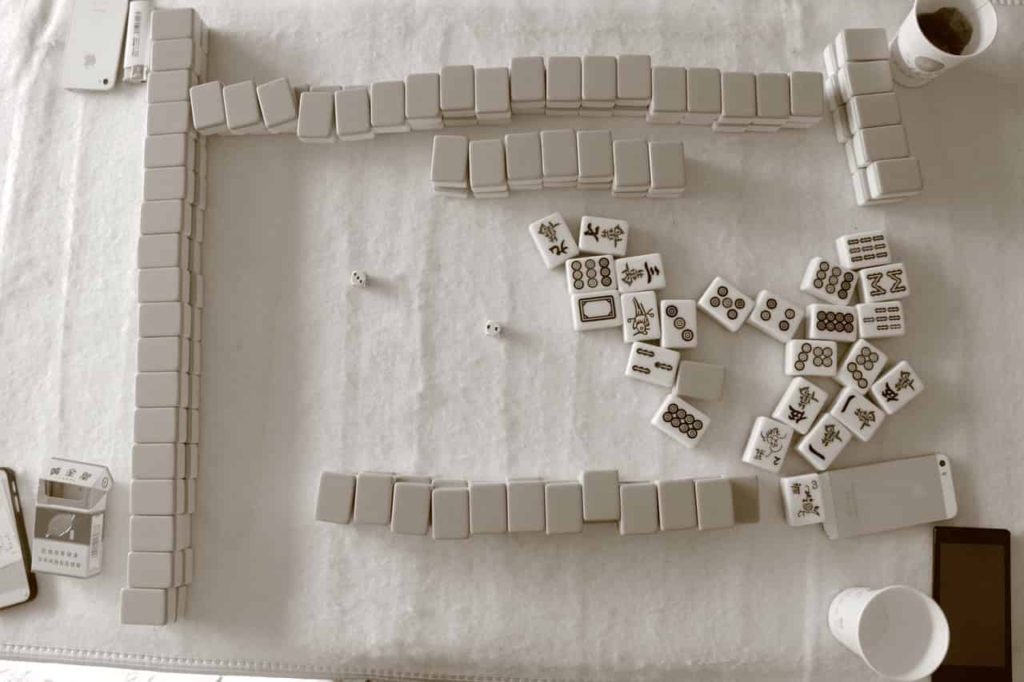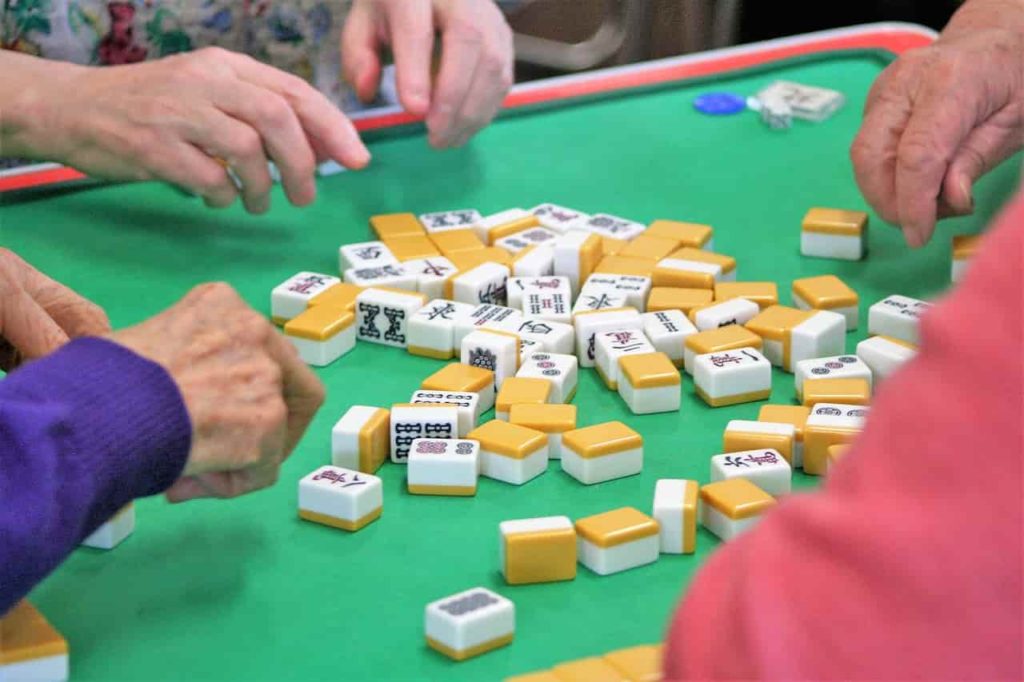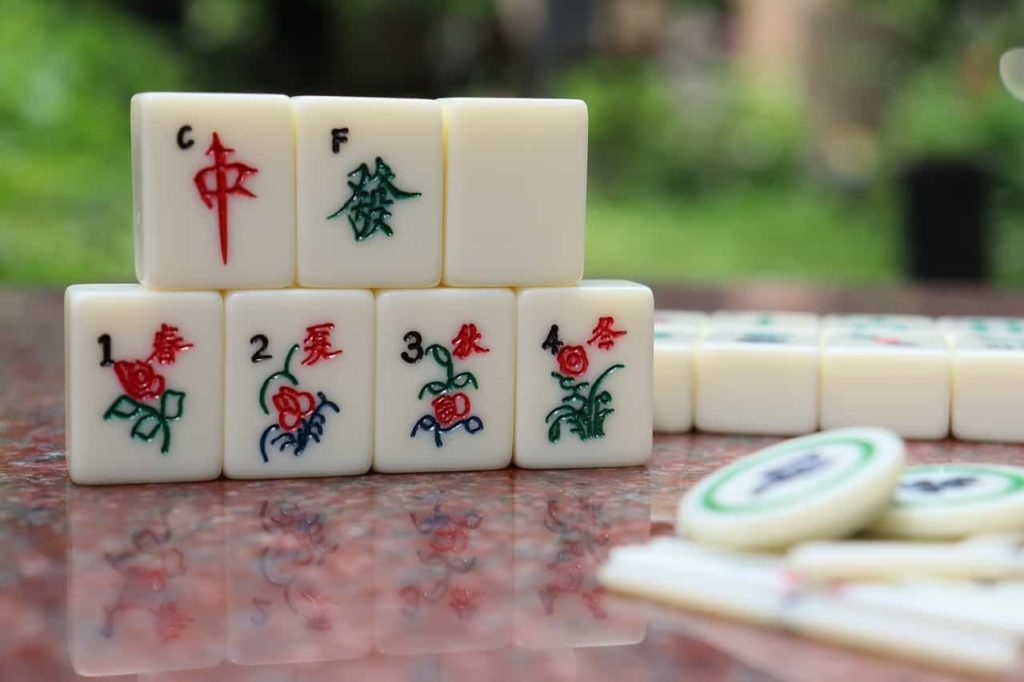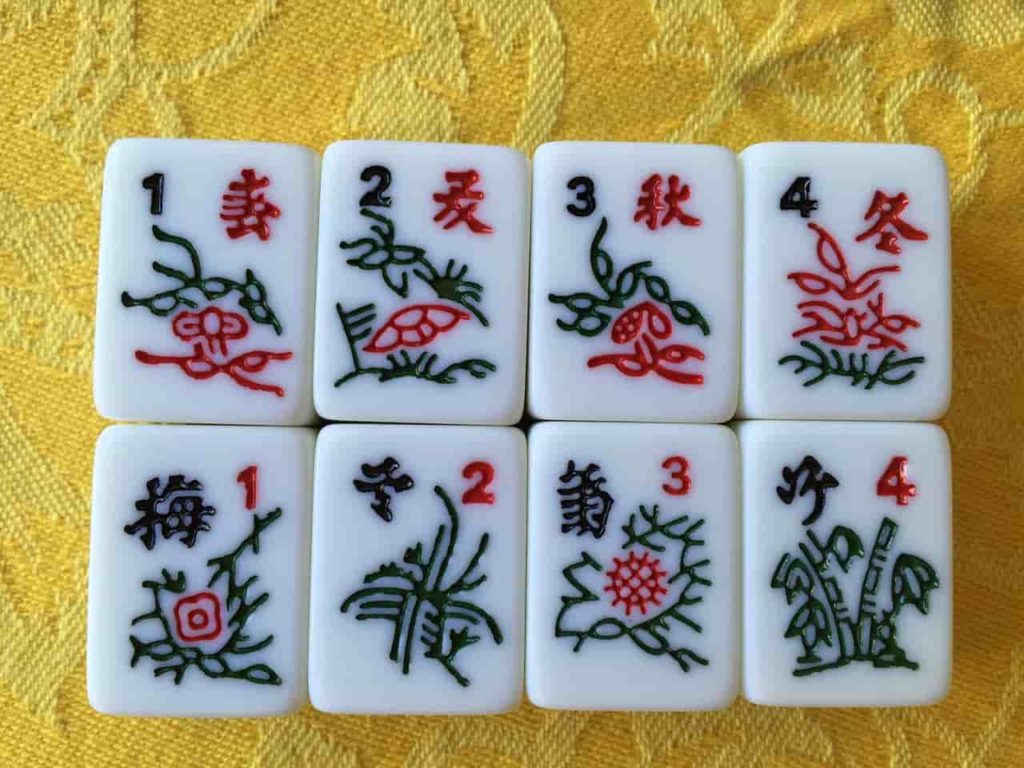Brief Overview of Mahjong
Mahjong originated in China during the Qing dynasty (1644-1912). The exact origin of the game is unclear, but it is believed to have been based on card games played in China during that time. The game was initially played by four players using 144 tiles, but modern versions may include 136 or 152 tiles.
Mahjong can be played with various rules depending on cultural preferences and regional differences. However, all versions require players to form sets consisting of three or four matching tiles called melds or pungs along with a pair to win.
Importance of the Wall in Mahjong
The wall plays an essential role in determining which tile a player draws next during gameplay. When creating the initial wall at the start of each round, players take turns breaking off sections until each player has 13 tiles per hand.
The wall also serves as an obstacle for opponents who want to see what type of hand you are building after you discard a tile face-up on your turn. When playing online mahjong games like those found at Betway Casino Canada website or elsewhere online today, walls and shuffled decks help ensure fairness throughout gameplay.
History of Mahjong Wall
Mahjong is a popular tile-based game that originated in China during the mid-19th century, and it has since evolved into many variations around the world. The game’s origin is not entirely known, but it is believed to have been created by a Chinese army officer named Hung Huu Ling. The game then became popular among the Chinese elite and spread throughout the country’s different regions.
The wall in mahjong has been an essential part of the game since its inception. It serves as a barrier between players’ tiles and ensures randomness and fairness in gameplay.
The earliest versions of mahjong did not have walls, and players had to shuffle their tiles manually before each round. However, as the popularity of mahjong grew, players sought more efficient methods for shuffling tiles.
Origin and Evolution of the Wall
The first version of the wall was simply a pile of tiles placed on top of each other after shuffling. This method proved insufficient as players could easily see which tiles were coming up next in the game. As such, new types of walls were developed over time to increase randomness and make it difficult for opponents to predict what was coming up next on their rack.
One major innovation was adding breaks or gaps in the wall after every 16 or 18 tiles; this allowed players to see only a small number of possible options at any given time. Another variation used two walls instead of one; this added an extra layer of complexity to gameplay as players now had to decide which wall they wanted to break through first.
Different Types of Walls Used in Mahjong
There are several types of walls used in mahjong today: wooden racks with slots for holding tiles, plastic racks with pushers for building walls quickly, or even virtual walls in online versions of the game. The most traditional type of wall is the wooden rack that is used in Chinese mahjong. These racks are usually made from bamboo and have a curved shape.
Another popular type is the plastic rack, which has pushers on each end that make it easy to build and break down walls quickly. This type of wall is commonly used in Japanese mahjong and is becoming more prevalent in other versions of the game as well.
Significance of the Wall in Traditional Chinese Culture
The wall has significant cultural importance in China; it is often seen as a symbol for barriers between individuals or groups. In mahjong, the wall represents a barrier between players’ tiles and helps to ensure fairness and impartiality in gameplay.
Additionally, there are many superstitions surrounding the building and breaking down of walls in mahjong. For example, some players believe that they should always build their own walls to prevent bad luck from affecting their gameplay.
Others believe that certain numbers or patterns within the wall signify good or bad luck for players. Understanding the history and significance of the mahjong wall can help players develop better strategies for gameplay while also appreciating this essential aspect of traditional Chinese culture.
The Structure and Functioning of the Wall
Description and Components of the Wall
In Mahjong, the wall is made up of all the tiles used in a game. These tiles are arranged in two rows, each row with 17 stacks that are 2 tiles high. The wall is usually built at the start of each game by arranging all the tiles face down on top of each other, then pushing them together to form a compact structure.
The wall serves as a barrier between players’ hands, preventing them from seeing what their opponents have. The wall consists of four different types of tiles: suits (Bamboo, Characters and Dots), honor tiles (Dragons and Winds), flowers and seasons.
Each suit has nine different numbered tiles along with four duplicate copies for each number tile bringing it to 36 total per suit. Honor Tiles have three sets consisting of four identical pieces for each type totaling to twelve honor tile pieces while Flower and Season Tiles only come into play during certain variations or when included in additional supplementary tiles.
How to Build a Proper Wall
Building a proper wall is essential for ensuring fairness during gameplay. A poorly constructed wall can give one player an advantage by exposing more favorable tiles than another player’s hand. To build a proper wall, first shuffle all of the tiles face down until they are well mixed; no two adjacent stacks should have identical numbers or suits next to each other.
Next, arrange all 144 shuffled mahjong pieces neatly into an upright formation using your hands until they form walls on either side with an opening where you can draw for your hand later on. Once properly organized make sure that you push these two halves together without leaving any gaps or spaces where players could peek in between some bits before starting gameplay.
Importance of Shuffling Tiles Before Building A Wall
Before building the wall, it is crucial to shuffle the tiles thoroughly. This prevents any pattern or bias from occurring in the wall’s structure that could give a player an unfair advantage.
A proper shuffle means each tile should be randomly placed and mixed in with the others. There are various shuffling techniques used by different players around the world, but all share one goal: randomizing tiles so that they are not predictable.
It is important to note that when shuffling, players should never mix their own hands with tiles in order to preserve fairness. Additionally, some players may choose to cut or spread out the shuffled deck on a table before building their wall.
Doing so can provide another layer of randomness and ensures that no one player will have more control over their starting hand than others. Overall, understanding how to build a proper wall can greatly contribute towards creating an even playing field for all involved parties while allowing mahjong enthusiasts to focus on strategy and gameplay instead of worrying about structural issues within their game board.
Role of the Wall in Game Strategy
How to Use the Wall to Your Advantage During Gameplay
One key strategy in Mahjong is how you utilize the wall, which can ultimately determine the outcome of the game. The wall provides players with a sense of security because it hides the tiles from view.
However, it’s important to remember that every tile that is removed from this wall brings opponents one step closer to winning. One way to maximize the effectiveness of the wall is by focusing on building a strong one early on in the game, which can help control what tiles are available for opponents and increase your chances of drawing useful ones.
Understanding How to Break Down a Strong Opponent's Wall
Breaking down an opponent’s strong wall can be challenging but not impossible. It requires patience, careful observation, and strategic thinking. One tactic is to focus on discarding tiles that you think opponents might need without giving away any clues about your own hand.
Another option is using Jokers or other special tiles to disrupt their strategies and confuse them. Luck also plays a role here, as it often does in Mahjong.
The Role that Luck Plays When Breaking Down a Wall
Luck always plays a significant role in breaking down walls during Mahjong gameplay. Although strategy and skill are essential components of success when playing this game, sometimes pure luck takes over since players have no control over what tiles they draw from the opposing player’s or dead piles. As such, being fortunate enough to draw a tile that fits perfectly into your hand can turn around an entire match.
Etiquette Surrounding the Wall in Mahjong
Proper Handling and Treatment of Tiles When Building or Breaking Down Walls
Mahjong etiquette involves proper handling and treatment of all tiles during gameplay out of respect for fellow players. You should never slam or throw tiles when building or breaking down walls, as this is viewed as rude. Instead, it’s always best to handle tiles with care and place them gently on the table.
Superstitions Surrounding Walls in Different Cultures
In some cultures, superstitions surrounding the wall in Mahjong can affect gameplay. For example, it’s believed that touching someone else’s wall or disturbing a wall that has been erected by another player will bring bad luck.
In other parts of the world, people hold certain beliefs about how to position tiles when building a wall for maximum fortune. While these superstitions may not be scientifically supported, they add another layer of excitement to an already fascinating game.
Respect for Opponents' Walls
Showing respect towards your opponents’ walls is essential in Mahjong as it’s considered bad manners to knock over your opponent’s wall intentionally. If you accidentally knock over an opponent’s wall during play or while building it up at the beginning of the game, apologize and help rebuild it. Being courteous and respectful will make the game more enjoyable for everyone involved.





